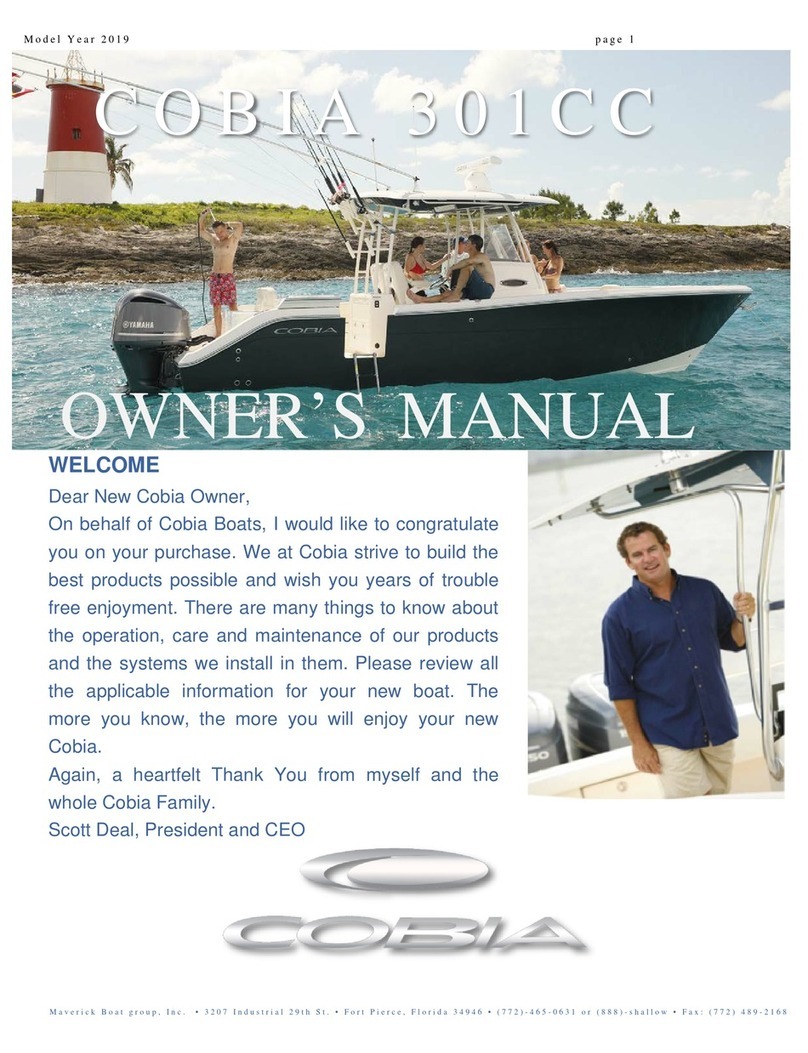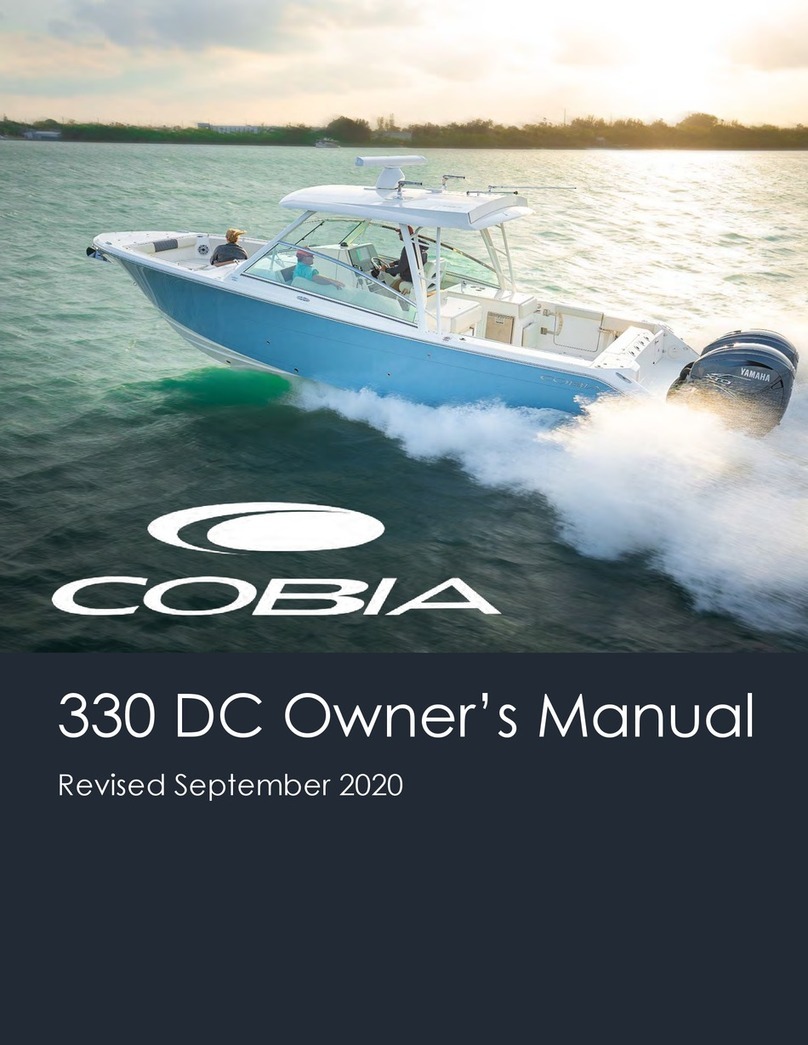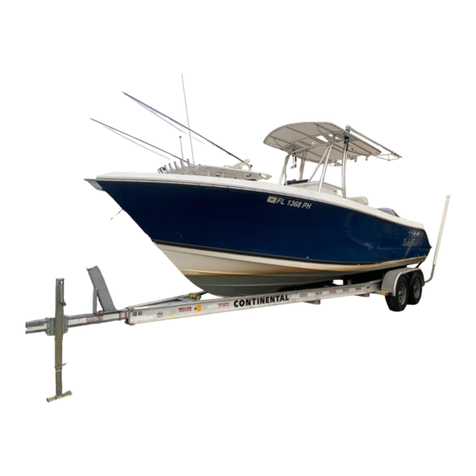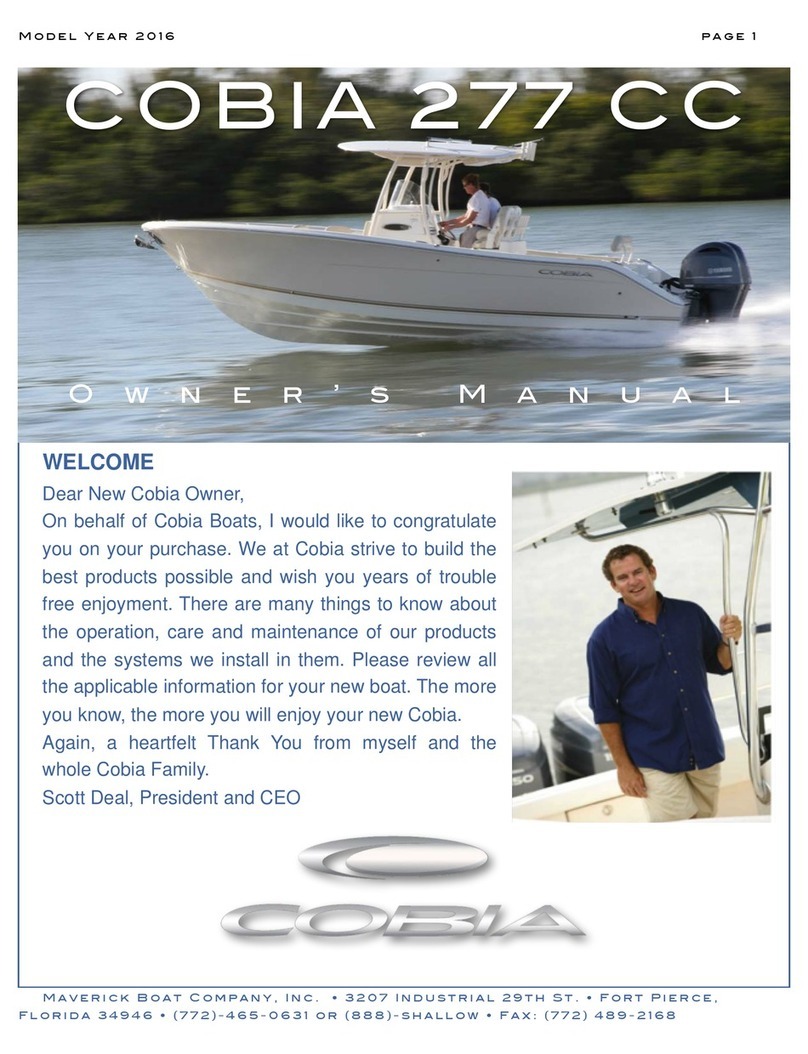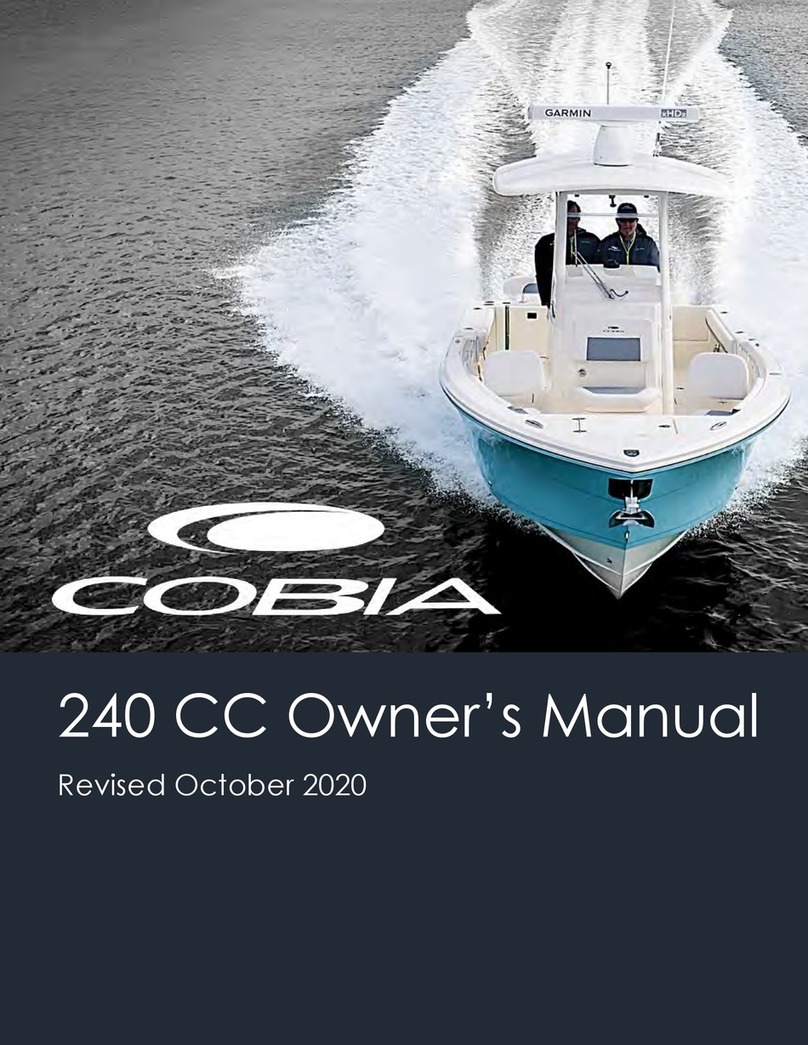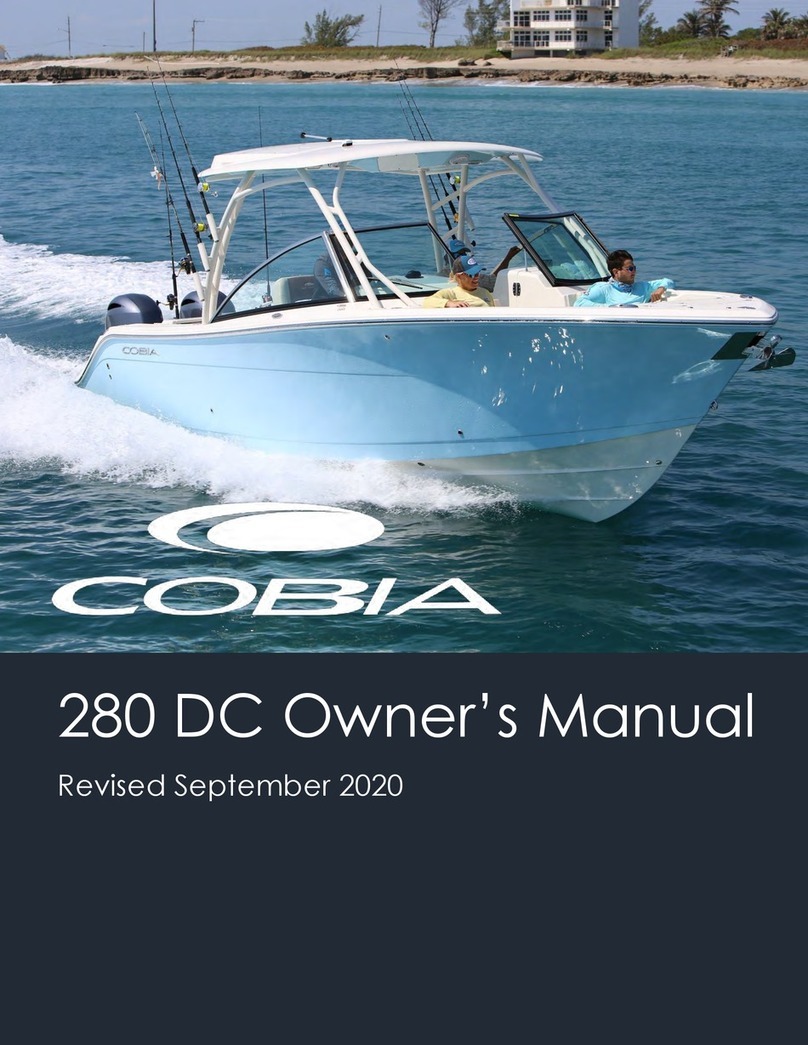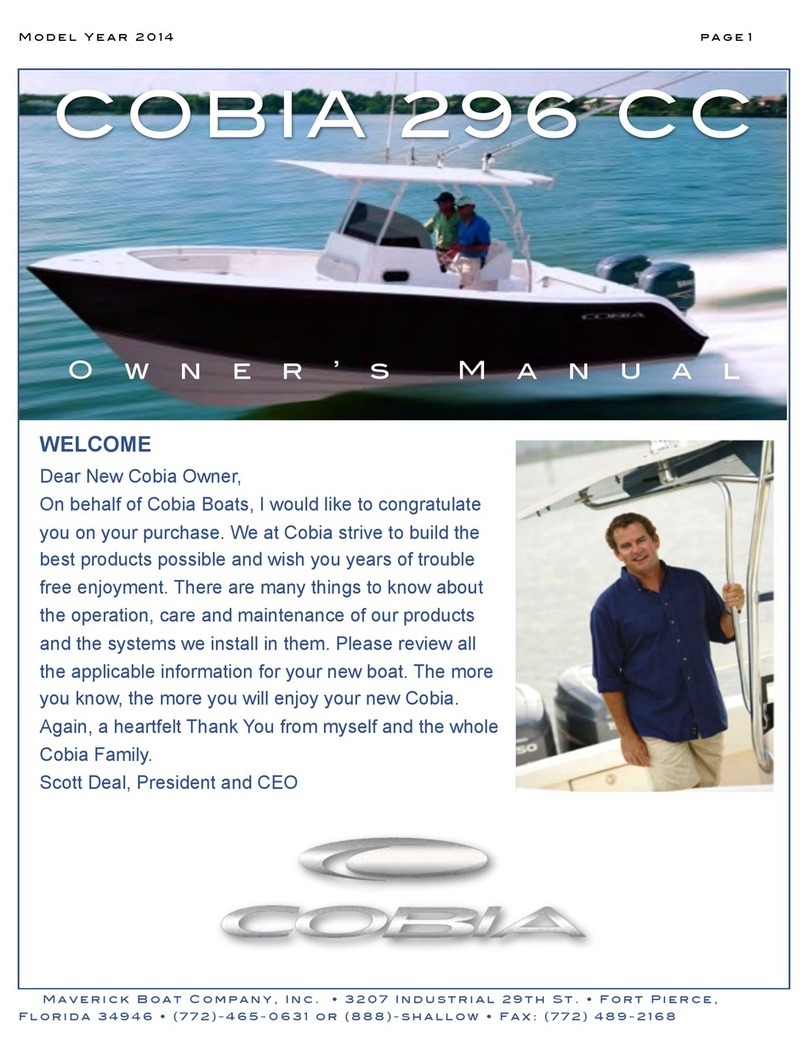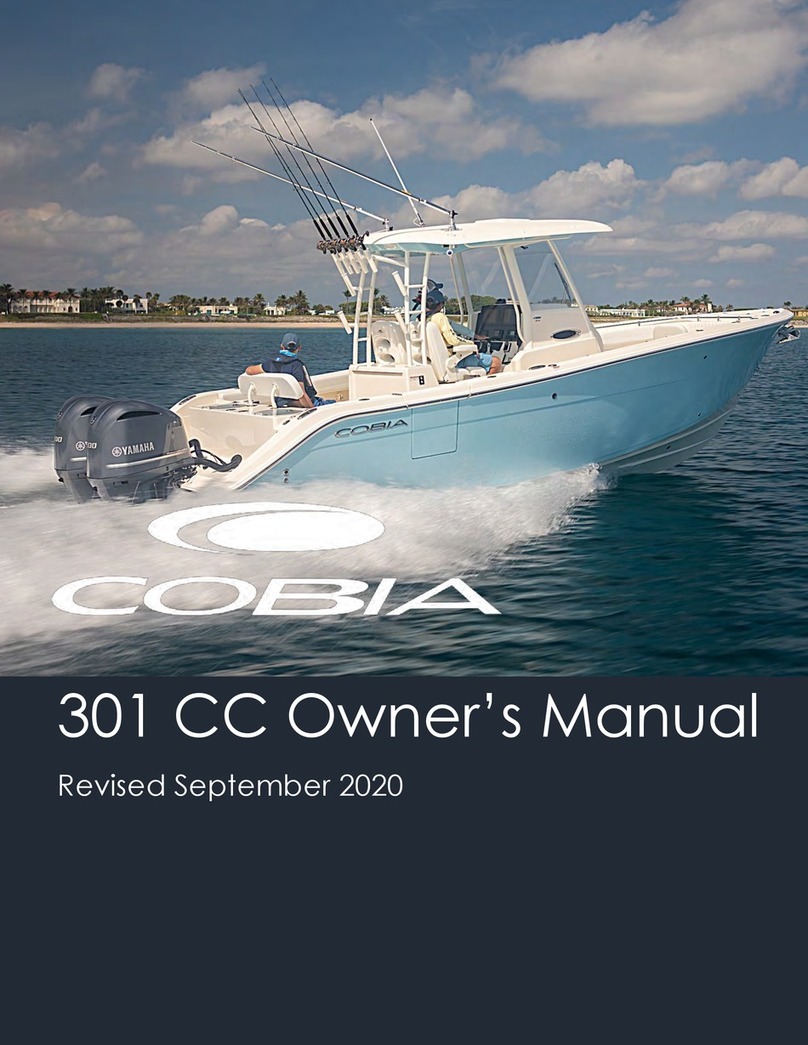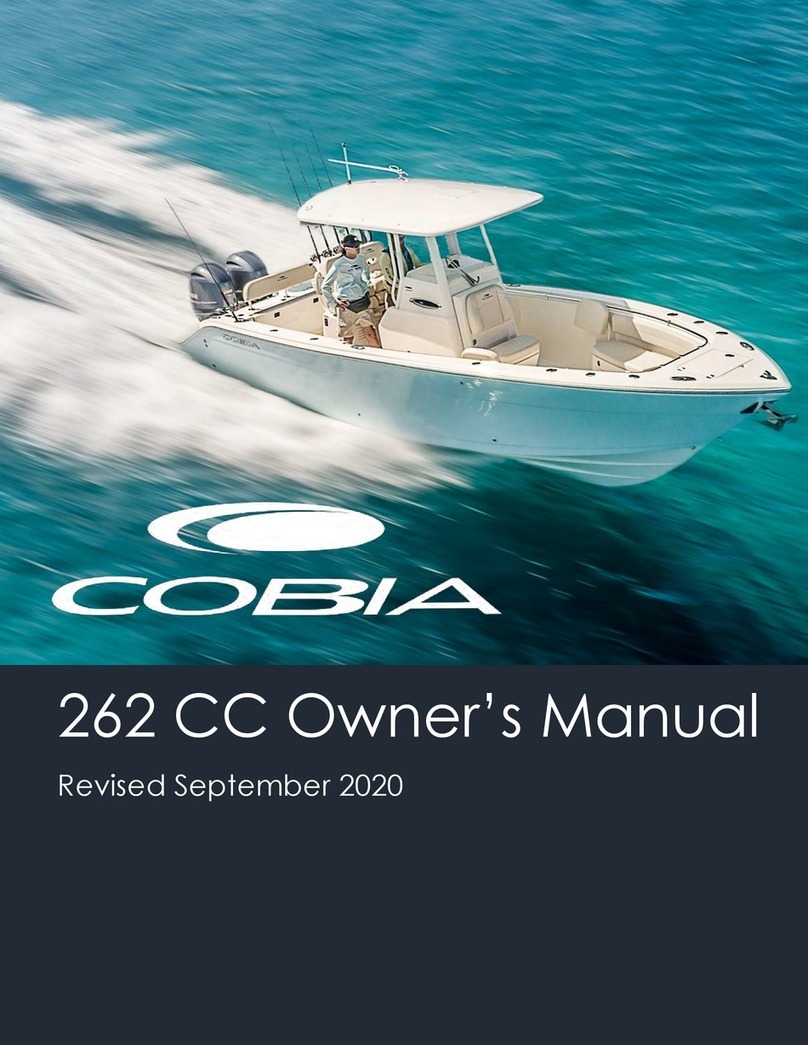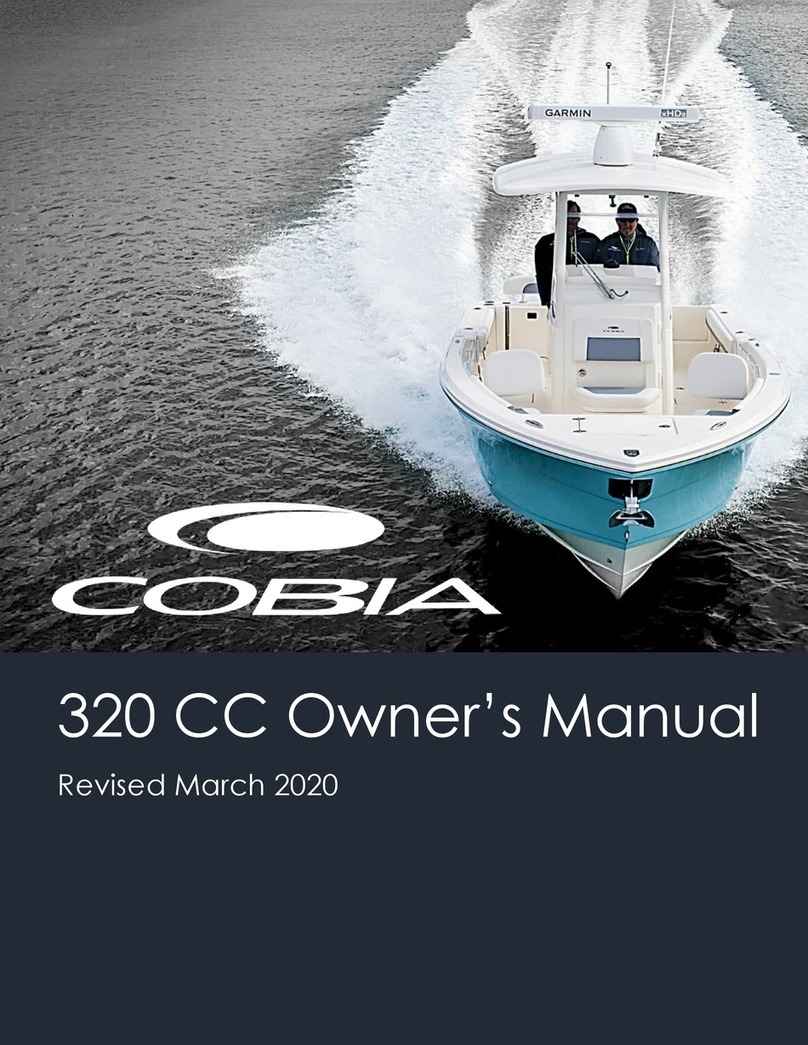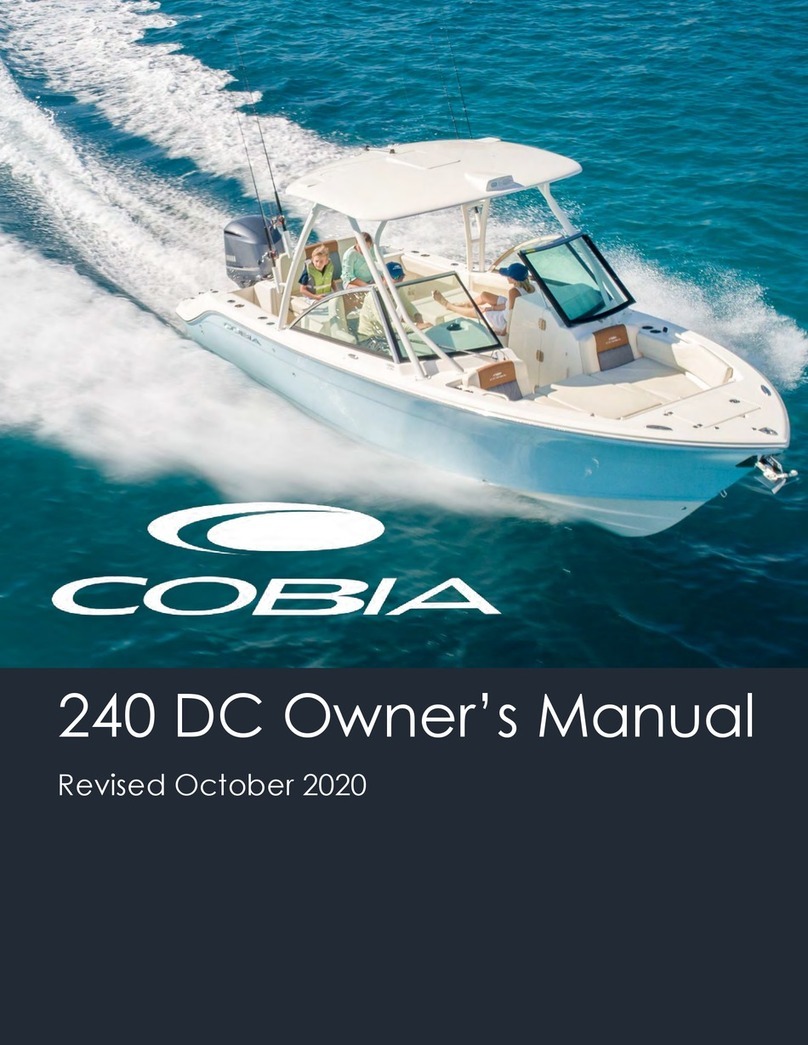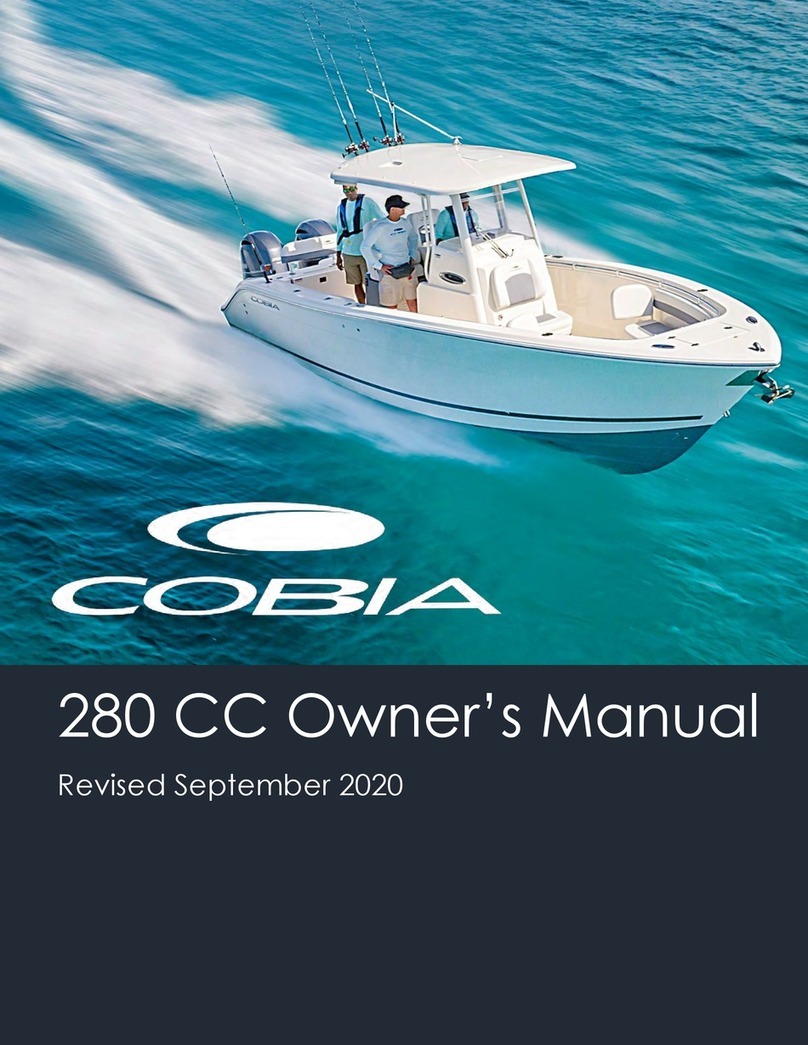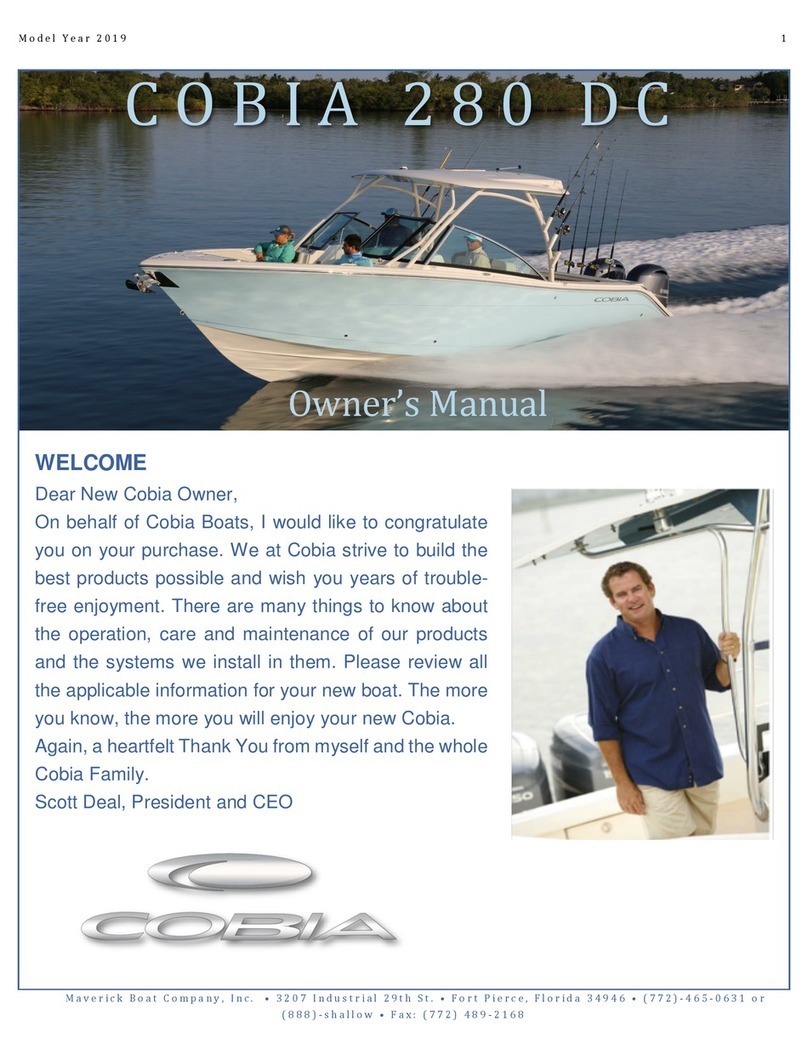
3
Maverick Boat Group
3207 Industrial 29th St. • Fort Pierce, Florida 34946
(772)-465-0631 •cobiaboats.com
Table of Contents
Cobia 350 CC Specifications ...............................................................................................................4
Pre-Operation Checklist.........................................................................................................................5
Maintenance & Cleaning .....................................................................................................................6
Engine Break-In Period ...........................................................................................................................7
Helm & Command Link Gauges .........................................................................................................8
Fuel-Water Separator & Drain ..............................................................................................................9
Bilge ...........................................................................................................................................................10
Systems......................................................................................................................................................12
Console Access and Console Interior..............................................................................................13
Cockpit Courtesy Lights .......................................................................................................................17
Ladder & Props.......................................................................................................................................18
Steering.....................................................................................................................................................19
Fuel System ..............................................................................................................................................20
Self-Bailing Cockpit & Livewell ...........................................................................................................20
Rod Storage & Fish Lockers .................................................................................................................22
Macerator Access & Operation........................................................................................................23
Anchor Locker ........................................................................................................................................24
Battery Switch and Main Distribution Panel ...................................................................................24
Seating......................................................................................................................................................26
Standard Features .................................................................................................................................28
Optional Features ..................................................................................................................................31
Cobia 350 CC Console Wire Harness...............................................................................................38
Cobia 350 CC Deck Wire Harness ....................................................................................................39
Cobia 350 CC Hardtop Wire Harness...............................................................................................40
Cobia 350 CC Hull Wire Harness........................................................................................................41
Cobia 350 CC Bunk Placement Diagram.......................................................................................42
Upholstery Care & Cleaning Guide..................................................................................................43
Warranty...................................................................................................................................................44
